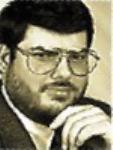I want to make sure you have a copy of The Art of Electronics by Horowitz and Hill.
This is hands-down, the best electronics book I've seen in 25 years. The book is a practical approach to every facet of electronics and taught me more about every aspect of design than I had learned before. Not much math past algebra (pity to waste all my calculus and diffeq) but enough to develop intuition about design.
Chapters:
1. Foundations - Ohm's law, voltage dividers, Thevenin's equivalent, capacitors, inductors, transformers, reactance, and diodes
2. Transistors - Switches, amplifier biasing, the Ebers-Moll model, constant current sources, Miller effect, and Early effect
3. FETs - Basic FET circuits, switches, MOSFETs
4. OpAmps - The golden rule of opamps, real-world behavior, single supply operation, feedback, and compensation
5. Active Filters and Oscillators - Active filters, VCVS, state variable, Twin-T, gyrators, switched capacitor, relaxation oscillators, 555, crystal oscillators
6. Voltage Regulators - 723, unregulated supplies, zener diodes, ICs, HV regulators, micropower regulators
7. Precision Circuts and Low Noise Techniques - Precision op amps, amplifier noise, noise measurement, and shielding
8. Digital - TTL, CMOS, Karnaugh maps, sequential logic, one shots, ICs, and pathology
9. Digital Meets Analog - CMOS/TTL interfacing, long wires, A/D and D/A conversion, PLLs. and noise generation
10. Microcomputers - 8086 assembly, I/O, PC bus interfacing, and data communications
11. Microprocessors - 68008 assembly, an analog signal averager design, and support chips
12. Electronic Construction Techniques - Prototyping, PC board fabrication, and housing
13. High-frequency and High-speed Techniques - HF amplifiers, transmission lines, stubs, baluns, AM, SSB, FM, FSK, PWM, and switching
14. Low-Power Design - Batteries, solar cells, micropower regulators, amplifiers, oscillators, and digital design
15. Measurements and Signal Processing - Transducers, standards, bandwidth reduction, and FFTs
The book also contains information on oscilloscopes, math, resistors, schematics, load lines, transistor saturation, LC filters, and some data sheets.
At over 1100 pages this is not light reading, but if you read it, you'll walk away with more than you would at your average 4 year school. Highly recommended. Nothing else even comes close.
Order The Art of Electronics now.
You can also order the student manual that goes with the book if you want details of the lab exercises.
Labels: electronics
Submit to:
 Del.icio.us |
Del.icio.us |
 Digg |
Digg |
Slashdot |
 Diigo
Diigo


0 Comments:
Post a Comment
<< Home